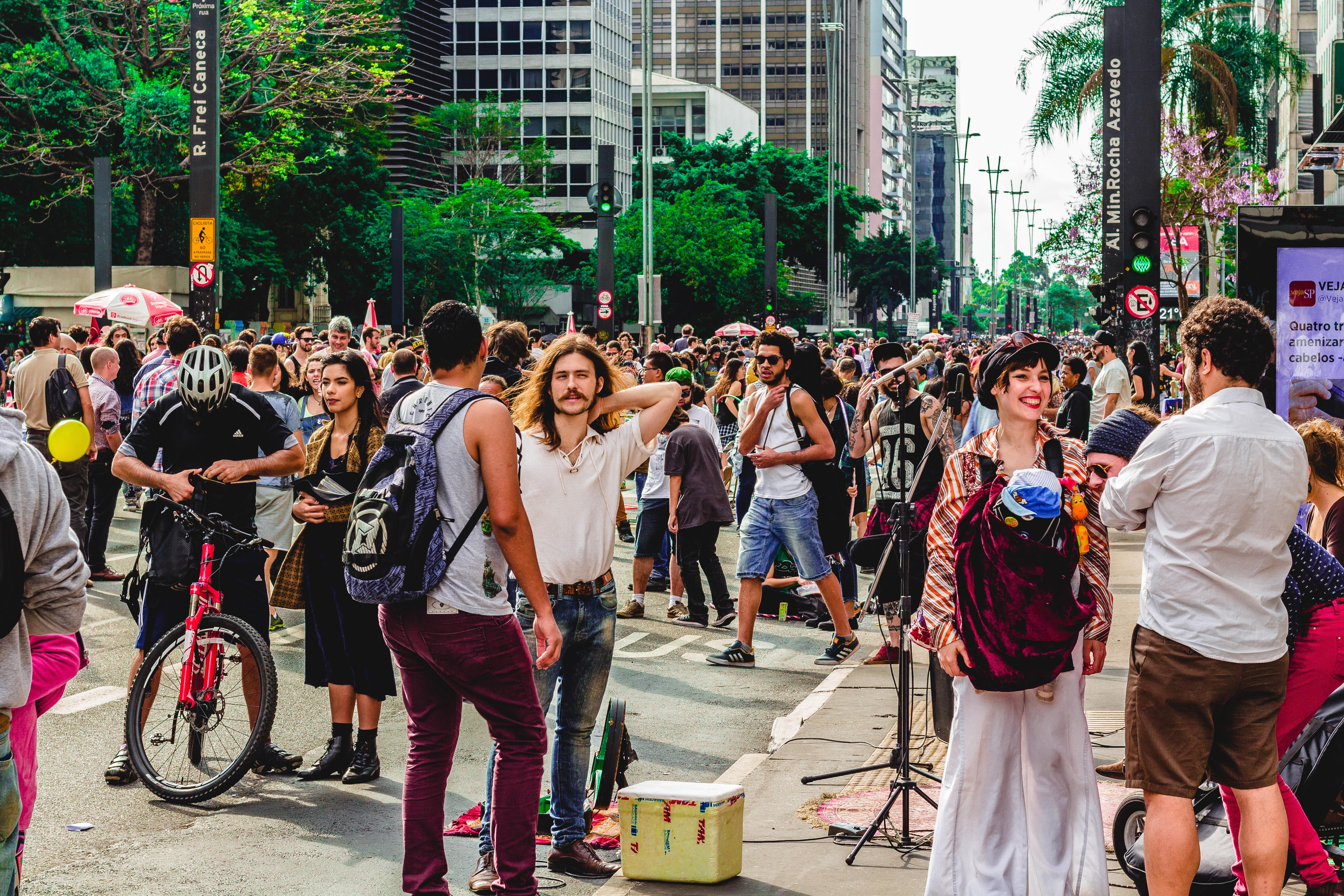The Unexpected Truth of Brazil's Progressive Carnival

At first glance, Brazil’s religious festival, Carnival, seems to be a display of the country’s sexual liberation and acceptance of cross-dressing. However, an in depth analysis of the festival underscores the country’s culture of contradiction in which sexual liberation exacerbates machismo culture.
Image from pexels.com.
Carnival: An event meant to celebrate non-heteronormativity but holds concealed transgressions developed from a strong machismo culture. For five full days, 50,000 samba musicians, 400,000 spectators and 200,00 people dressed in elaborate costumes fill the streets of Brazil. Some Brazilians refer to it as “The Greatest Show on Earth.”1.
This traditional, Western Christian, pre-lenten celebration, “Carnival” brought by the religious colonizers can also be attributed to the growth of Brazil’s lively cross-dressing culture, gradual normalization of the trans community, and overall, an elevation of life for marginalized communities.2
The roots of these traditions go back thousands of years to when troupes in Angola designed elaborate costumes and competed amongst their neighborhoods.3 The holiday was initially a small religious gathering; however, by the 19th century, Brazilians were inspired by the elaborate balls of their previous colonizers. In 1928, one of the first sambas schools was organized in a Rio slum.4
The celebrations’ roots in the slums of Brazil to its modern-day grandiose characteristics demonstrate the liberating nature of the Carnival’s development.5 With a high number of Catholics in Brazil, trans people were able to use this religious holiday to escape the predominant traditional, religious culture.
Cross-dressing was not only normal on this day, but encouraged. Because of post-colonial Brazil’s embrace of cross-dressing, we see the first documented cases of transgender people in brazil.6 *
An event which directly conflicts with traditional social norms in this way may seem too good to be true and I would agree.
In a visit to Brazil for the Carnival festival, a tourist noted that “It is very common for men to dress in drag (Disney characters and Japanese anime are popular choices), and to even wear body suits with exaggerated female anatomy. Women, on the other hand, are expected to dress in traditional female clothing.”7 These double standards in cross-dressing underscore the heightened prejudice trans-men face in Brazillian society and historical representation.
This is due to “macho” Brazilian culture that pervades into Carnival and the experience of transgender Brazilian people.8 In Brazil, male transvestism has historically been more popular than female crossdressing due to restrictions placed on women. When men dress up for Carnival they define the “most dressed” as the “most macho”. S/He is therefore empowered by patriarchal terms to cross-dress. Thus, male cross-dressing for carnival reinforces gender and social norms which are harmful for the transgender community in Brazil.
The adversities of a trans person in Brazil still exist despite a once a year, seemingly progressive carnival. When cross-dressing people sing and dance with their community, they are feeling pleasure and happiness. These may remove them from the harsh realities of gender and sexuality issues in Brazil. It also confuses history into perceiving Brazil’s sexual liberal events as democratic liberation for marginalized groups.
I will admit, when I first began reading into the Carnival celebration, I was hoping to find a case-study of a trans-friendly community in Latin America. However, what I found was a facade of sexual openness concealing the realities of the trans-experience.
I believe the nature masculine qualities attached to cross dressing during this time exacerbates the effects of the patriarchy as well as the every-day prejudice towards trans people. Brazil’s history has proven it to be a culture and political system of mixed contradictions. Carnival is a hopeful, progressive celebration set in the context of a traditional, rigid culture. Brazillian trangender people have and will continue to find ways to exist within this society. However, Carnival celebrations did not indicate structural changes for the trans experience but it eventually set the framework for cross-dressing/transgender communties who could come together in adversity.
Notes
-
“Brazil’s Carnival, Pre-Lenten Celebrations Have Ancient Roots : Lifestyle: Many Scholars Trace Similar Festivities around the World to the Roman Lupercalia, a Festival to Welcome Spring That Evolved into a Period of Debauchery, Circuses and Gladiatorial Contests.” Los Angeles Times. Los Angeles Times, February 19, 1995. https://www.latimes.com/archives/la-xpm-1995-02-19-mn-33901-story.html. ↩
-
Branford, Sue, and Bernardo Kucinski. 1995. Brazil, Carnival of the Oppressed : Lula and the Brazilian Workers’ Party. London: Latin America Bureau. ↩
-
Ibid. ↩
-
Ibid. ↩
-
Lewis, J. Lowell. “Sex and Violence in Brazil: Carnaval, Capoeira, and the Problem of Everyday Life.” AnthroSource. John Wiley & Sons, Ltd, January 7, 2008. http://onlinelibrary.wiley.com/doi/10.1525/ae.1999.26.3.539/abstract. ↩
-
Branford, Sue, and Bernardo Kucinski. 1995. Brazil, Carnival of the Oppressed : Lula and the Brazilian Workers’ Party. London: Latin America Bureau. ↩
-
Berkley Center for Religion, and Georgetown University. “Carnival Reveals Much about Gender, Sexuality, and Culture in Brazil.” Berkley Center for Religion, Peace and World Affairs. Accessed April 16, 2020. https://berkleycenter.georgetown.edu/posts/carnival-reveals-much-about-gender-sexuality-and-culture-in-brazil. ↩
-
Lewis, J. Lowell. “Sex and Violence in Brazil: Carnaval, Capoeira, and the Problem of Everyday Life.” AnthroSource. John Wiley & Sons, Ltd, January 7, 2008. http://onlinelibrary.wiley.com/doi/10.1525/ae.1999.26.3.539/abstract. ↩
